Catherine Danae | Rod and Needle Wildlife Fiber Art
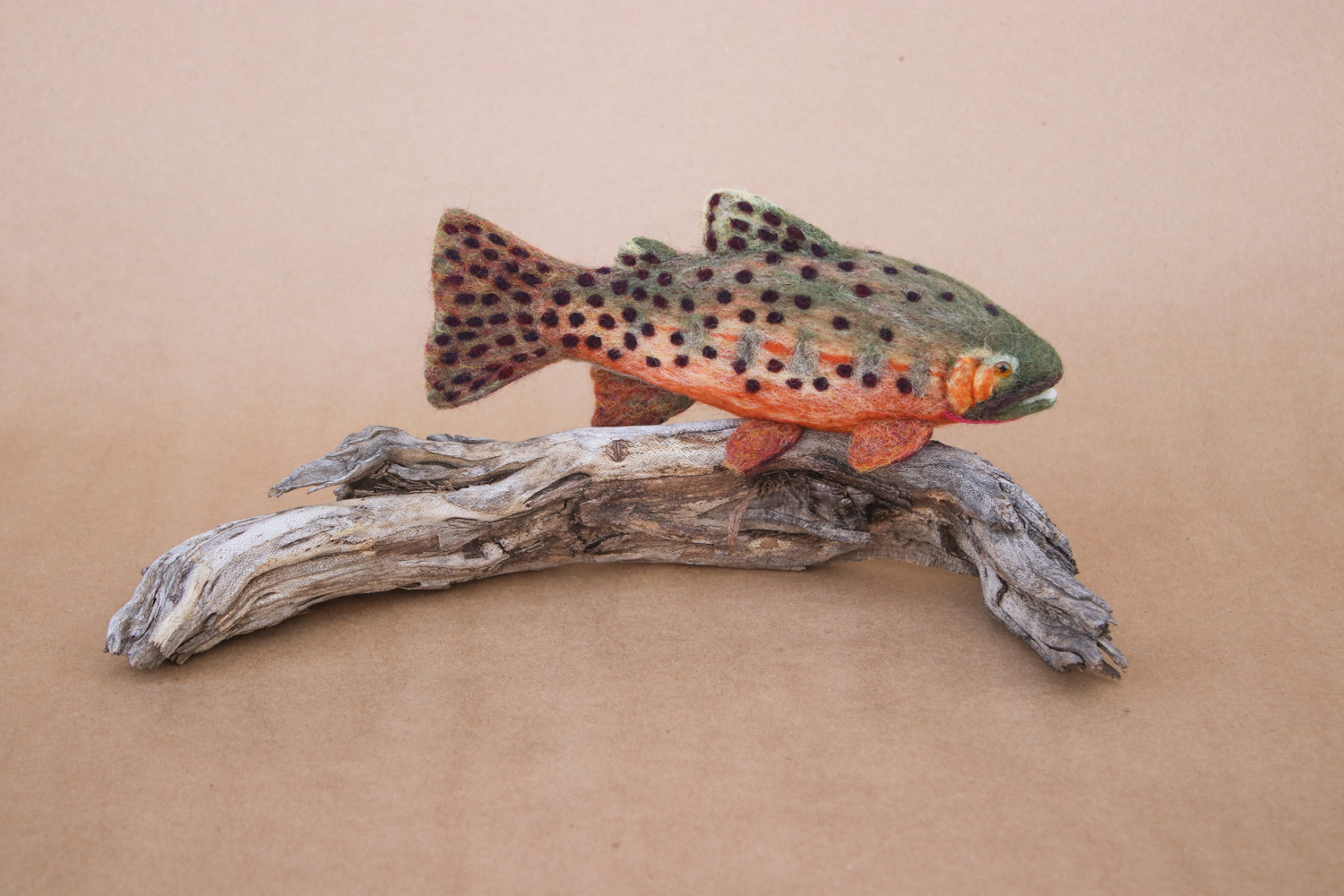
Catherine Danae | Rod and Needle
Wildlife Fiber Artist
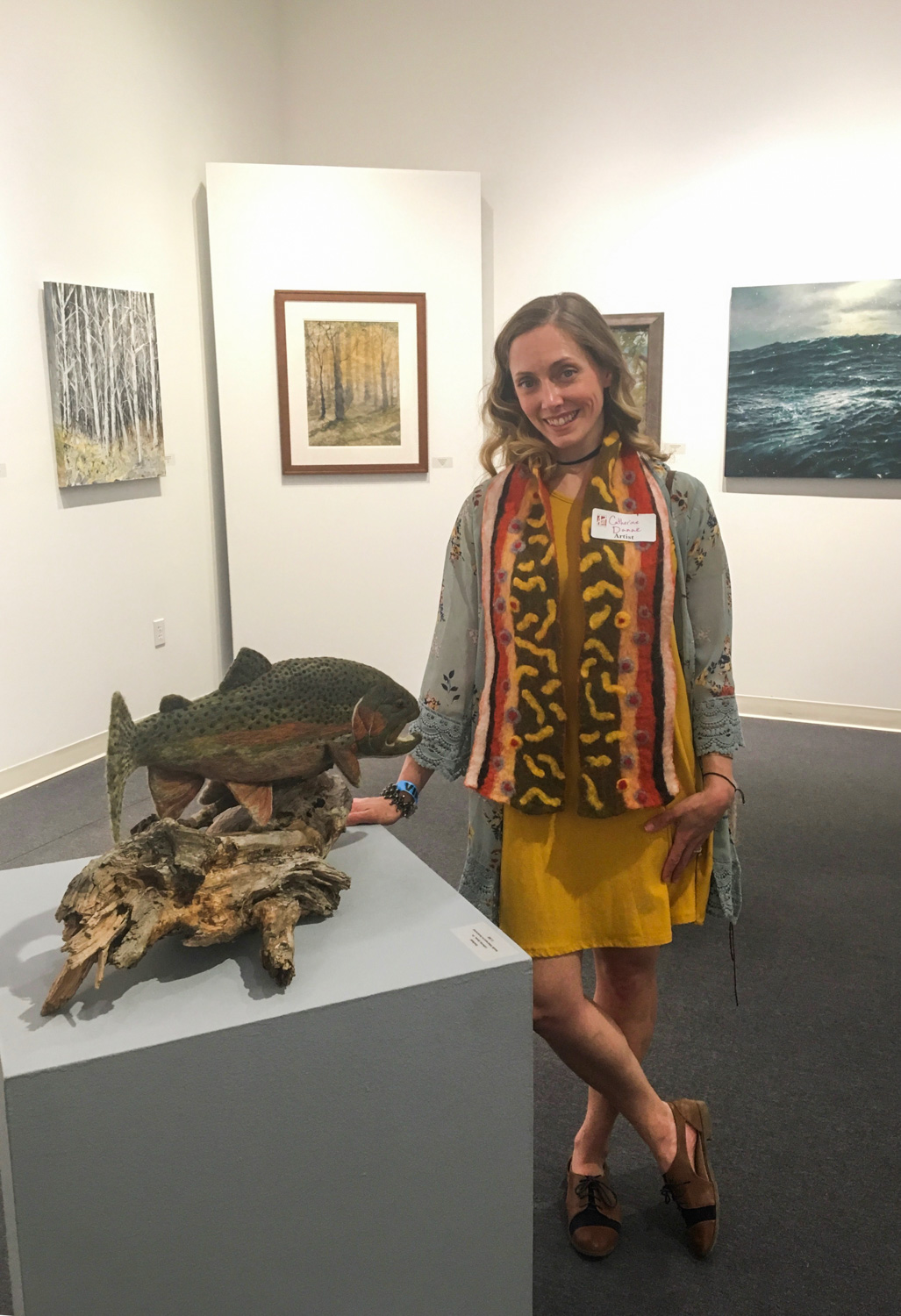
Catherine at an art show with her Steelhead sculpture
Catherine Danae is a self-titled ‘maker who loves the outdoors’ and more specifically—she’s an angler and a fiber artist who sculpts animals from wool.
The subjects she most frequently recreates in fiber are fish. Appropriately, combining fishing and felting, she brands her artwork with the name Rod and Needle.
We’re drawn to the tactile dissonance between her medium, wool, and the slick subjects she’s bringing to life. Seeing fish out of water and up close—soft and approachable, even—feels somewhat startling to the senses.
Because of this, Catherine hopes that people lean in and get close to her work. And more than that, she hopes interacting with often hard-to-touch creatures opens the door to talk about conservation.
Find out more, in Catherine’s own words:
Meet Catherine
You craft various creatures in fiber, but what draws you to fish in particular?
My admiration for the beauty in nature is felted into each one of my creatures, but my love for these speckled finned friends in particular comes from a long history of spending time on the water with those that I love. The outdoors has always been an important part of me, but fishing, canoeing, and the water in general has always held a special place in my life.
I can’t remember ever missing an opening day of trout season with my dad, and something that started out as a fun family tradition really grew into something more. From a way for me and my dad to connect, it also became a special activity for me and my husband to share. With my husband, I started to get more into fly-fishing and I have grown to really appreciate streams and creeks that can still support native species. As my love for fishing has grown, my love for the fish has as well.
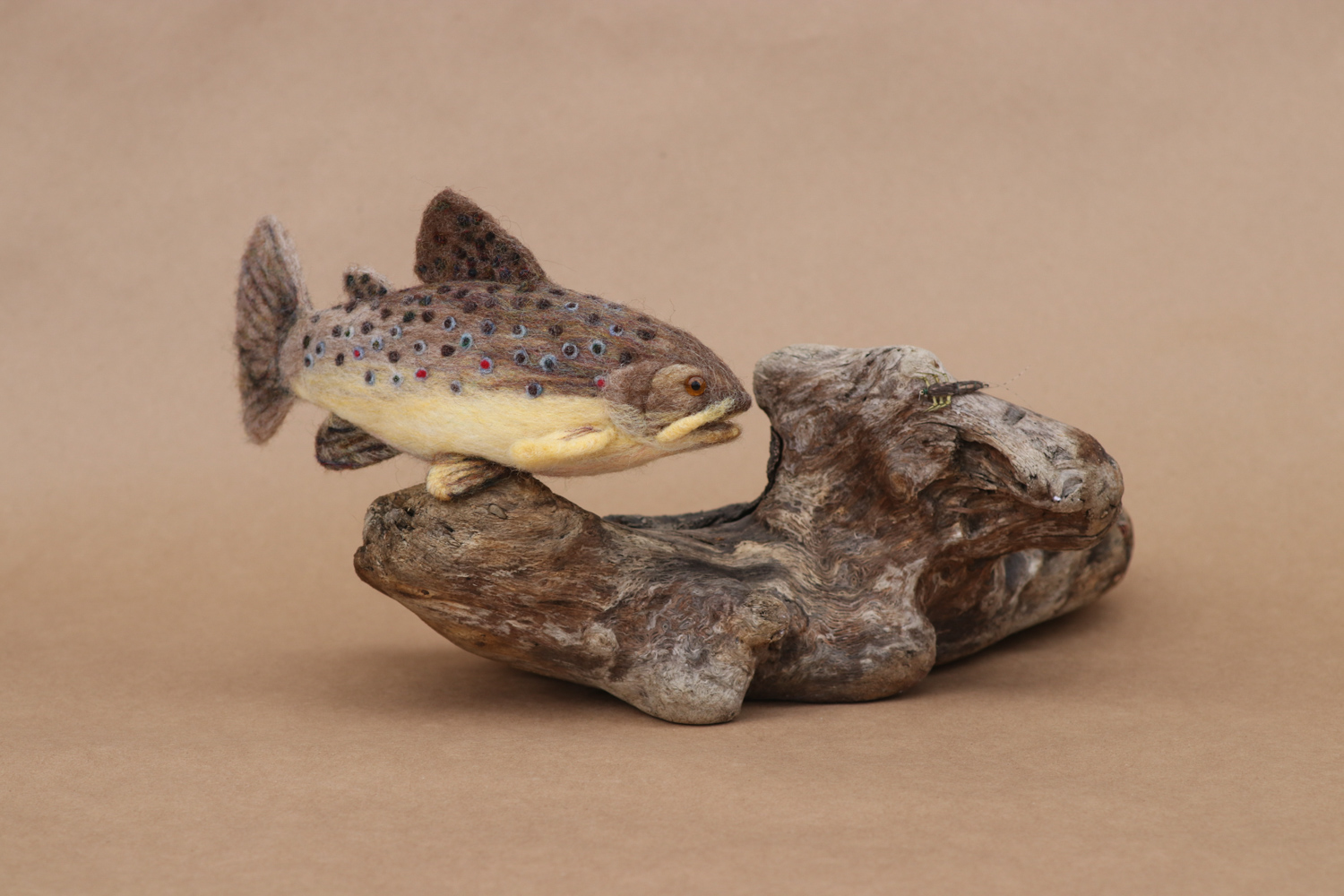
Brown Trout and Stonefly
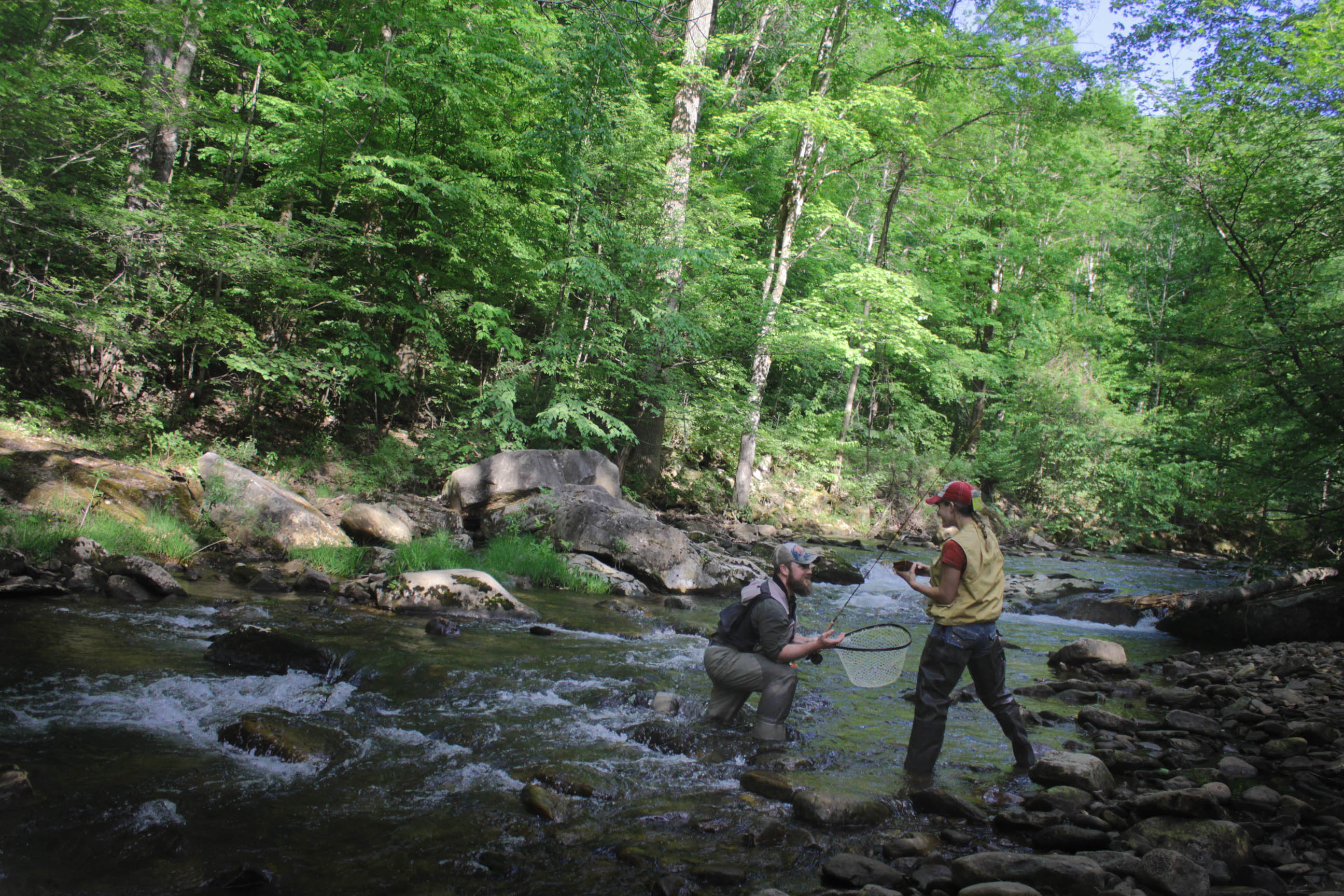
Catherine’s husband proposed on the river, while she had a fish in hand. How perfect is this?
- Dark Brookie with Stonefly
- Catherine and a Striper at Moraine State Park
I marvel at the color and pattern of the brook trout, one of my absolute favorite subjects, which is considered native to where I live in Pennsylvania. I began to explore the brook trout and other salmonids more closely. From this, I started to really see some issues that many people aren’t aware of when it comes to America’s fish.
I feel like I have a message worth telling through my fish soft-sculptures, and it is one I will keep telling in the hopes that many generations will get to enjoy all of these wonderful fish that call America home.
Besides the fact that the health of a trout can be a good indicator of the health of the waters it is living in, the idea of native verses invasive species really took hold in my mind and in my work. It was a startling revelation to me that non-native fish still get stocked in places that aren’t really their natural habitats, which can cause a decline in the native species.
I feel like I have a message worth telling through my fish soft-sculptures, and it is one I will keep telling in the hopes that many generations will get to enjoy all of these wonderful fish that call America home.
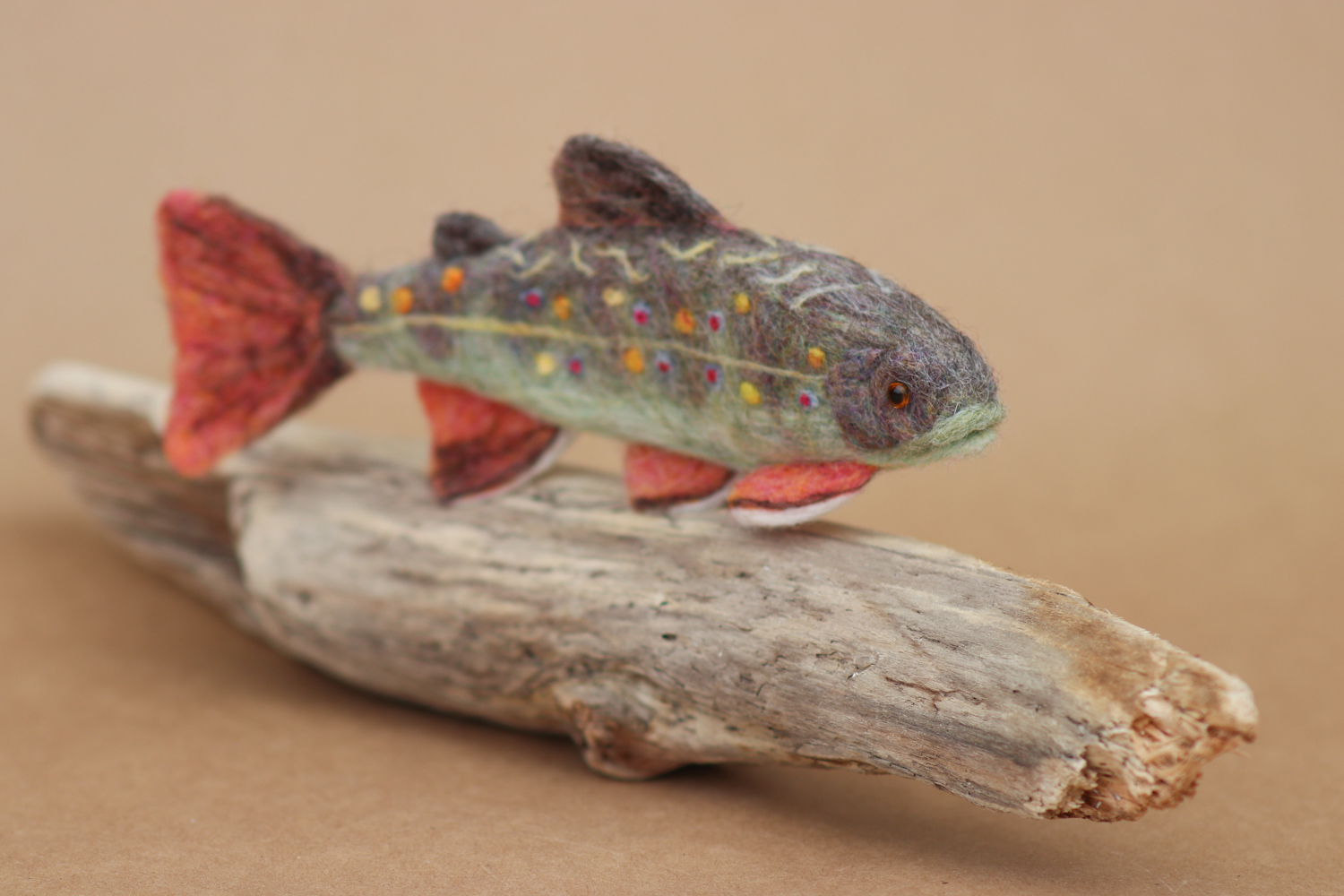
Shady Brook Trout up close
There’s a distinct textural contrast between wool and the slick reality of fish scales. How to you feel about this contradiction? What do you like about wool as a medium?
I love using wool to create these creatures since wool is so often seen as warm or soft, and fish are not. I feel like there are a few contradictions in my work beyond the textural contrast of the fish verses the wool, and I consider them all a wonderful tools to pull in a viewer.
Textile and fiber arts traditionally are thought of as feminine trades or art forms, so when someone once told me my art work was masculine, I loved it.
I love the fact that I am taking something thought of as slick and even slimy and making it soft and fuzzy. I love breaking the notion of a “masculine” subject with a “feminine” medium.
Tell us about your process. How does a wool sculpture come to life in your hands?
It all starts with a pile of fluff. I use core wool to begin a ghostly shape and poke away with a barbed felting needle. Once a basic shape is made with the core wool, I can begin to add color with the needle with dyed wool. Playing with the wool to get the right colors for whatever sculpture I am working on feels painterly to me.
I use my needle not only to shape and color, but to also add fins, limbs, or any other part of a wool creature. A lot of my work is mounted to found wood that my husband and I have come across while hiking or fishing.

Colorado River Cutthroat on sage branch
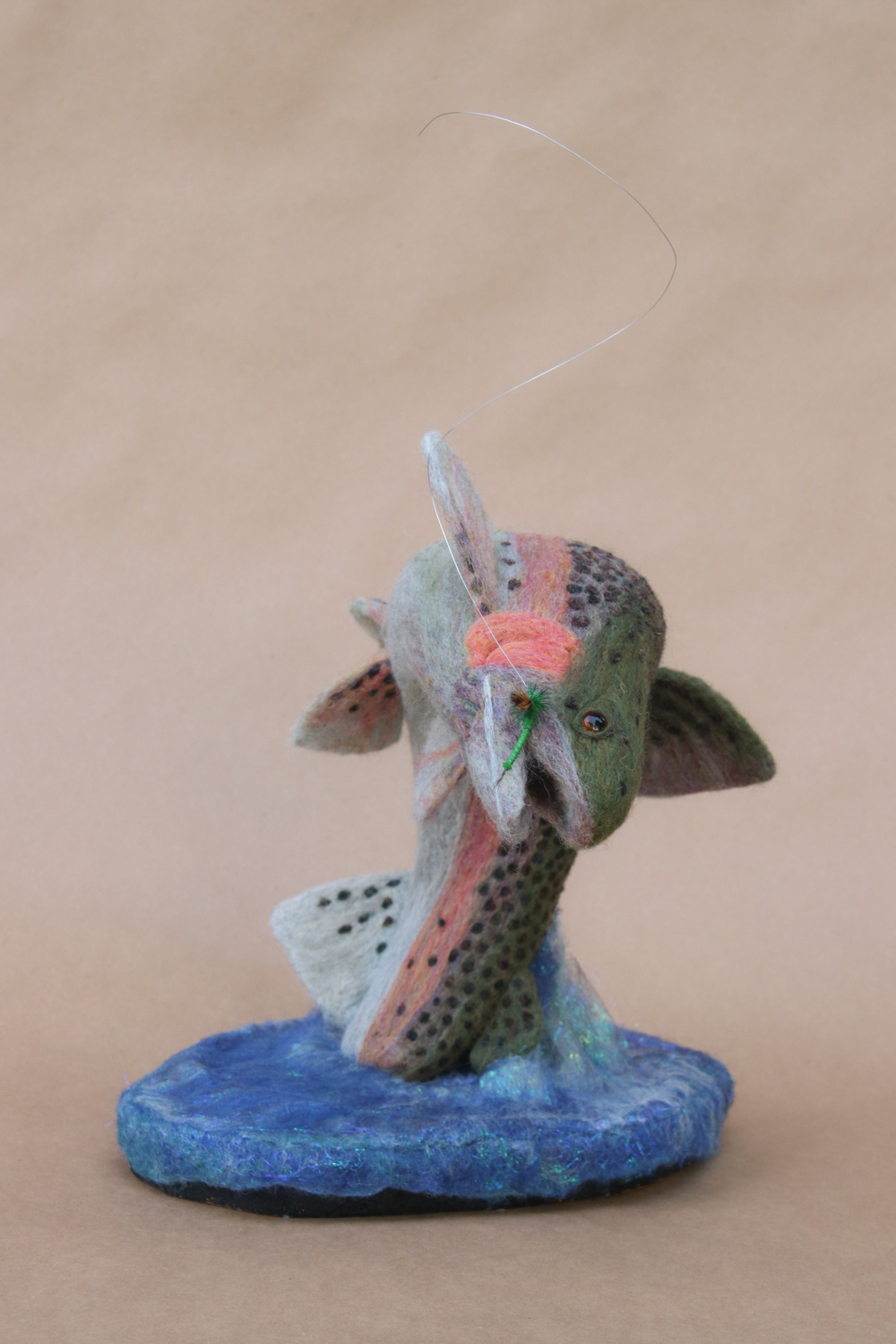
Rainbow Trout and Green Drake
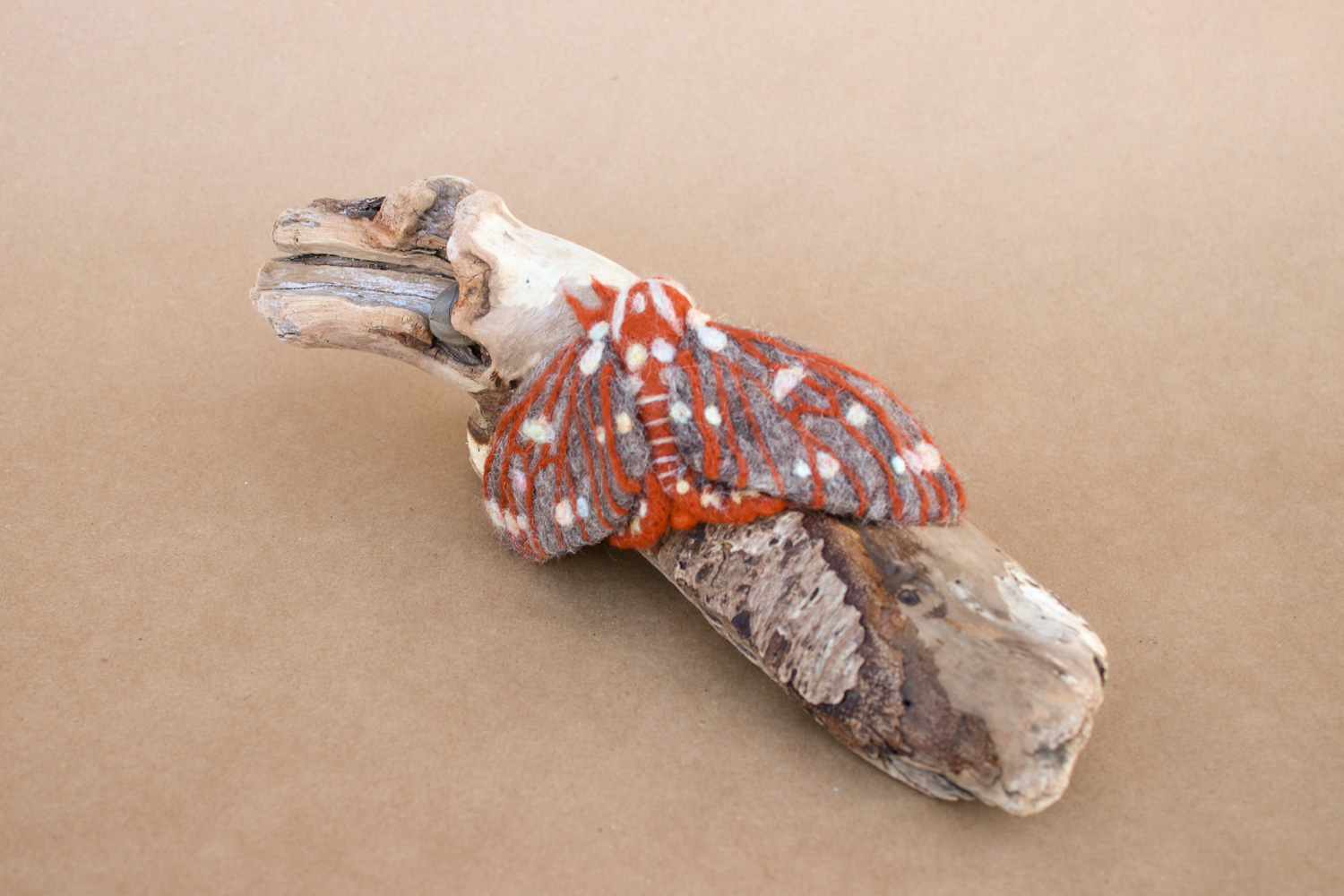
Regal Moth with Hickory Nut
What do you hope people take away from viewing and interacting with your work?
At various exhibitions or art festivals, I have received the comment, “I don’t really even like fish, but I like these!” as they lean in close and often touch the fuzzy trout. This is exactly what I hope my art does. From the fish to the insects to the fossils that I create, I find much of my work is themed around creatures people don’t normally get close to.
I hope that people lean in and get close, and I don’t even mind a gentle touch—because I want to get people interacting and thinking about these animals. My work often opens a door to talk about conservation and public lands, native verse invasive species, and ways to get involved in the outdoors.
And you recently applied to be an NPS Artist-In-Residence?
Because of my love for the outdoors, as soon as I found out about art residencies in our National Parks while in college, I knew that was something I just had to do. Feeling like I was finally in a place where my medium and my passions aligned it made sense to begin to apply to parks.
I am so pleased to say that I will be the artist for John Day Fossil Beds National Monument this September where will be working to bring fossils to life which will stretch and broaden my skills—fish I interact with quite often, but not brontotheres!
Working on the fossils will very much be a reminder that if we don’t take care of the species around us now, they too could become ancient history.
An exciting fact for me is that the John Day River system runs through the park. It is one of the longest free-flowing rivers in the USA with steelhead and Chinook salmon runs, which is important since the steelhead populations are under the Endangered Species Act protections. Working on the fossils will very much be a reminder that if we don’t take care of the species around us now, they too could become ancient history.
Learn more about Catherine Danae on her website, rodandneedle.com, and see more of her drawings and hiking adventures on Instagram @catherinedanae.


Be the first to comment